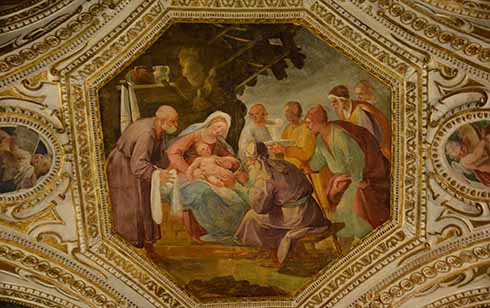 The art of accompaniment teaches us to remove our sandals before the sacred ground of the other. Being discipled by someone who knows, listens, guides and encourages has been a critical part of my faith journey. In addition to the wonderful people in my life, scripture has been another unfailing source of strength and inspiration. It shapes my faith like a winding brook and pushes me forward with the raging force of the sea. Sacred scripture has been my rock, my guide and my companion in a life of contemplation and action.
The art of accompaniment teaches us to remove our sandals before the sacred ground of the other. Being discipled by someone who knows, listens, guides and encourages has been a critical part of my faith journey. In addition to the wonderful people in my life, scripture has been another unfailing source of strength and inspiration. It shapes my faith like a winding brook and pushes me forward with the raging force of the sea. Sacred scripture has been my rock, my guide and my companion in a life of contemplation and action.
There is a significant difference between discussion and conversation. Discutere, from the Latin for discussion, literally means to dash to pieces, while conversation is about creating a common home for sharing deeply. My prayer is largely conversational, particularly when praying with the scriptures. Yes, there are times for analysing scripture, discovering its context, purpose and interpretation, but prayer generally draws me into a much simpler and more mystical space. I enjoy breaking open scripture each morning as it gives me something to chew over, savour and reflect upon throughout the day. I let the words rest in my heart and allow them to become part of who I am through my actions.
DIALOGUE
My prayer is an ongoing dialogue with God. I’m in no rush. I’m not trying too hard. There can be pauses and quite times, and I am comfortable in that silent presence. It's a loving relationship, in which I listen attentively to God and let the words permeate my being. When I am open to receiving, my life becomes a prayerful response and there is no need to fill my prayers with words.
Despite the dynamic nature of my faith, scripture remains a constant and unchanging source of abundance in my life. This is not to imply stagnation, rather, I experience scripture as the living word of God (Hebrews 4:12). Scripture is powerfully transformative, instructive, corrective, poetic, surprising, challenging, funny and human. I find it exciting. There is always something new to learn – it is always fresh.
My faith has developed from a basic and literal understanding towards a deeper and more mystical sense of meaning-making, particularly through contemplation. I have explored ways of encountering the Spirit of God through silence, personal reflection and the Jewish practice of midrash. Midrash responds to contemporary problems and creates new stories from the text, establishing connections between the realities of today and the unchanging scripture. I recently created a visual midrash from the narrative of the Samaritan Woman at the Well (John 4). It was written from the perspective of the personified Well of Sychar and offered insights about the encounter and transformation that took place between its visitors.
REACH OUT
I love to be playful and expressive with scripture in ministry and education and often wonder how to reach a biblically illiterate generation of young people. It was the same question that the 16th century painters responded to with their adornment of chapels, depicting scenes from Christ’s life, such as the work by Corenzio in the Salerno Cathedral (pictured), which decoratively retells Matthew’s Gospel. These frescoes communicated messages which transcended literature and language, helping to cross boundaries of evangelisation. Over the centuries, painters, musicians and writers have been captivating the soul through their emotive works which have drawn people closer to an encounter with God. Films and TV series such as The Chosen continue to help audiences imagine new portraits of Jesus and bring scripture alive.
THREE WORLDS OF THE TEXT
Depending on the situation, we may take a contemplative, emotional or intellectual stance with scripture. As a theologian, faith formator and educator, I try to help young people understand and experience all three stances. The ‘Three worlds of the text’ methodology has been a good development in Australian religious education. The world behind the text is a window to history, the world of the text is a picture of its literary features, and the world in front of the text is a mirror to see oneself and respond now and into the future (The National Catholic Education Commission). As I bring myself into the world of the text, something new emerges.
The Bible is one of many sacred texts that I draw on for prayer, as I believe God is revealed in all things (1 Corinthians 2:10) through many authors. I enjoy reading biblical reflections and commentaries from ancient and modern wisdom and taking time to think deeply about the meaning behind the text. I’ve been amazed to read reflections from people such as St Ambrose of Milan (333–397CE) that feel like they could have been written last week. Most homilies are preached by men, and ‘Australian Women Preach’ is a wonderful initiative helping to amplify this important voice.
Scripture feels like a dynamic journal between God and my spirit. It consoles, challenges and intrigues me, constantly nourishing my soul. Praying with scripture in the liturgy and in lectio divina continues to surprise me with the freshness of revelation that comes through communal contemplation. It’s a constant blessing to be accompanied by the living word of God and I pray that others experience the same company in their lives.